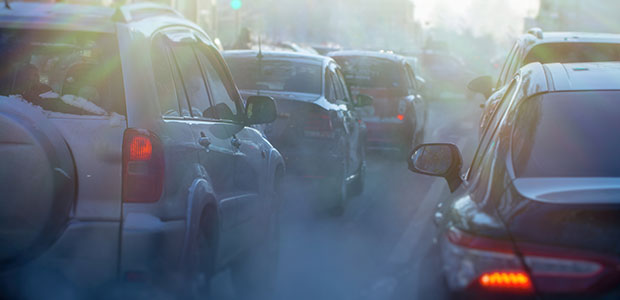
Page 3 of 2
Yes——Air Pollution Exists Inside Your Car, Too
Toxic air pollutants like carbon dioxide and nitrogen oxide don’t just float around in the outside air: the insides of our cars can also be full of unhealthy air, and this can gravely affect our health.
There are some preexisting ways to filter your car’s cabin air clean, particularly with the settings on your car’s dashboard. Fan speed, ventilation mode, and cabin air recirculation options can protect your respiratory health, but there these do not filter many of the smaller and hazardous particles in the air.
Research from the University of California, Riverside, is providing helpful ways to best filter your cabin’s air and protect your respiratory health.
Cabin air filters were originally designed to remove large particles like pollen and dust from your car’s air. Consequently, they are not good at filtering smaller, submicrometer particles from vehicle emissions like carbon dioxide (exhaled by passengers) and nitrogen oxide (from vehicle emissions). These gases, when inhaled, can impair decision-making, make you sleepy, or exert adverse health effects.
Other factors that can affect or exacerbate the risk of car cabin pollutants are heavy stop-and-go traffic, ventilation fan speed, pollutants in the outside air, and the number of passengers in the car.
Drivers who commute in large or congested cities are at a particularly high risk of exposure to particulate matter and unhealthy air while driving. This is because over the course of a long drive, your car cabin can accumulate levels of particulate matter and gases.
The University of California’s article on the study explains the way these particulates breach your car and enter your car cabin. It describes your car cabin like a “box with small holes for gas exchange.” This means that the cabin “will eventually be ventilated, or equilibrated, with the outside air.” This can take anywhere from a minute to an hour depending on a number of car settings and outside air factors.
Plus, cars differ in their ability to filter air pollutants and maintain clean cabin air quality. However, there was no standard test method or index to quantify these toxins—until now.
Heejung Jung, a professor of mechanical engineering for UC Riverside, studies how outdoor pollution gets inside cars and identifies ways to improve cabin air quality. Jung worked with consultancy firm Emissions Analytics to develop a standard test method for car air quality.
The standard’s first step toward regulatory agency approval was at a European Committee for Normalization workshop in November of 2019. During this workshop, the team tested 100 vehicles and is using the data to build a database that will help future drivers protect their respiratory health by including cabin air quality an identifiable factor that buyers can consider when purchasing a car.
In terms of reducing the amount of particulate matter in your car cabin, you can close the windows and choose the recirculation setting of the car’s ventilation system. Recirculation and and a low fan do remove most ultrafine nanoparticles that are good at penetrating human lungs.
However, this setting does contribute to more carbon dioxide exposure—a normal byproduct of human breathing. Few cars have the technology to reduce carbon dioxide.
Jung’s group has studied ways to angle recirculation flaps in a certain direction to control the extent of exchange between recirculated and fresh air. This method is intended to reduce carbon dioxide exposure and manage particulate matter levels.
This method—known as “fractional air recirculation”—is a viable option for car manufacturers to improve air filtration systems that would minimize particulate matter, carbon dioxide, and nitrogen oxide.
However, until manufacturers incorporate this into car models, drivers can experiment with this method themselves. Drivers can adjust modes depending on how fast they’re driving, the number of passengers, how well-sealed the car windows are, and how efficient the car’s cabin air filtration system is. When Jung and Emissions Analytics unveil a database in the foreseeable future, it will provide estimated for over 2,000 car models.
“When you see polluted road conditions such as a congested road or lots of trucks in front of you, then choose recirculation mode and adjust the fan speed. Full recirculation at the lowest fan speed should not be used for more than a few minutes as carbon dioxide will quickly build up within the cabin,” Jung said.
If you must keep recirculation mode on for longer than a few minutes, Jung recommends increasing ventilation fan speed. A higher fan speed, while noisy, can result in a bit more ventilation than low speed. Manufacturers can also incorporate fractional recirculation into their ventilation designs.
“This principle applies to all enclosed environments such as airplanes, buses, trains, subways, and buildings,” Jung said. “We can significantly reduce exposure to air pollutants in some environments where people spend the most time with air circulation systems that include fractional recirculation.”